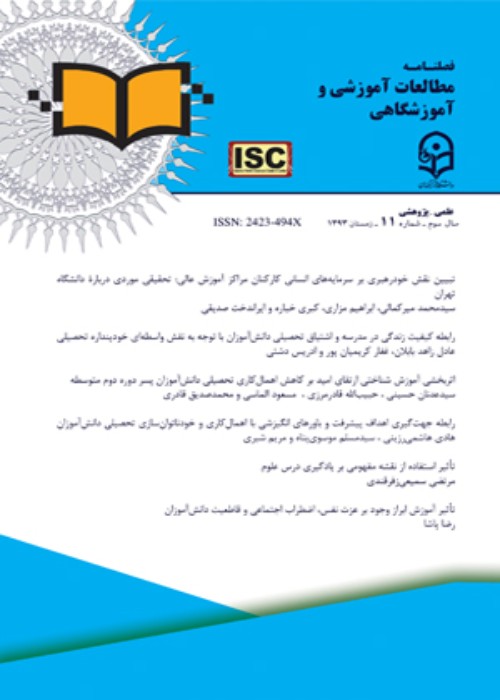Exploring the Understanding of the Dimensions of the Teacher's Authority in the Classroom; With a Mixed Approach (The Case: Farhangian University)
The purpose of this research was to identify the dimensions of teacher's Authority in the university classroom and to draw a developed model of the concept of teacher authority in the classroom. This study includes a mixed methods of sequential exploratory strategy. In the qualitative stage, the conventional content analysis method has been used and in the quantitative stage, "survey-descriptive" research has been used. The participants in the present study, in a qualitative phase, was the selected 12 experienced professors who had been recognized for more than 10 years of work experience and excelled in terms of students and teachers, and were purposefully selected for in-depth interviews. The Coding method was used to analyze the data. The results of 72 concepts included 18 pivotal categories and 6 main themes: institutional power, emotional power, cognitive power, environmental dynamics, learning enthusiasm, and productive impact. Based on the data obtained from the qualitative section, a questionnaire was developed and distributed and collected among 285 students (215 men and 70 women) who were randomly assigned to a relative class, then the data using Software Spss22 and Lisrel8.54 were analyzed... The findings of the qualitative section of the research showed that the dimensions of teachers' power in the classroom are three institutional, emotional and cognitive dimensions, which together with two variables of the dynamics of the environment and the enthusiasm and taste of learning in the student of science have led to productive effect. Also, in a quantitative study, the findings showed that teachers' power (institutional, cognitive, and emotional) in the classroom has a productive effect on student teachers. Also, Also, teachers 'authority in the classroom has had a productive effect on teachers' students through dynamism in learning situations and learning enthusiasm. Consequently, the structural equation model has a relatively been fitted based on the indices.
- حق عضویت دریافتی صرف حمایت از نشریات عضو و نگهداری، تکمیل و توسعه مگیران میشود.
- پرداخت حق اشتراک و دانلود مقالات اجازه بازنشر آن در سایر رسانههای چاپی و دیجیتال را به کاربر نمیدهد.



